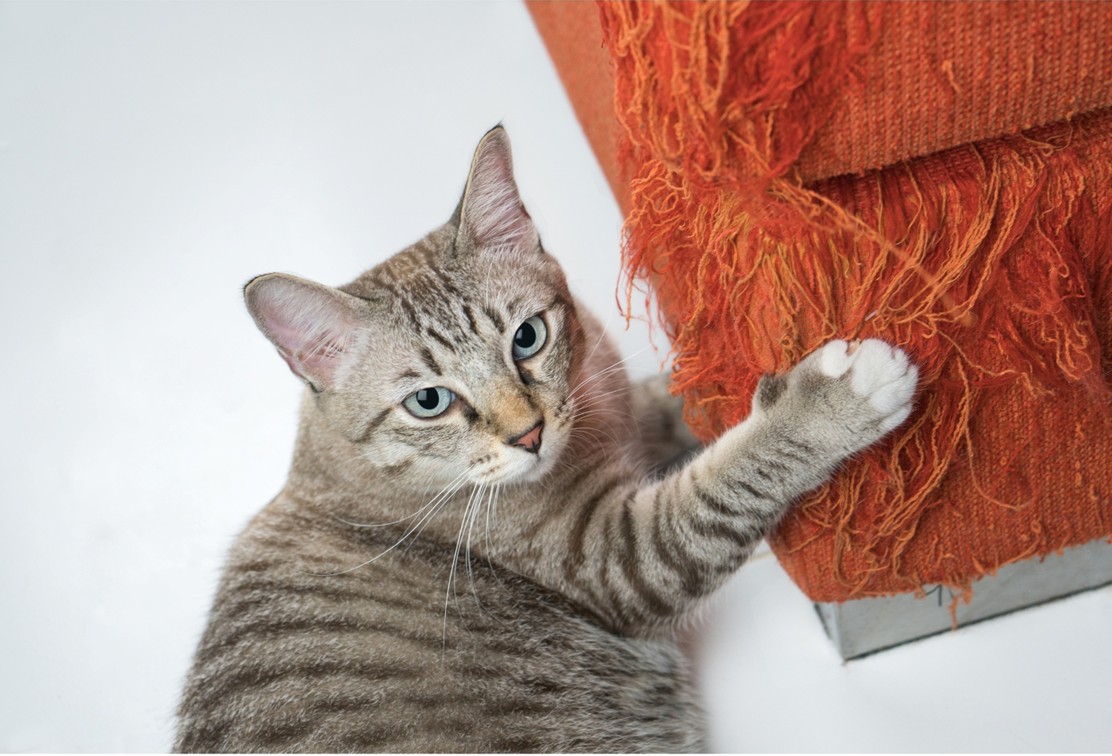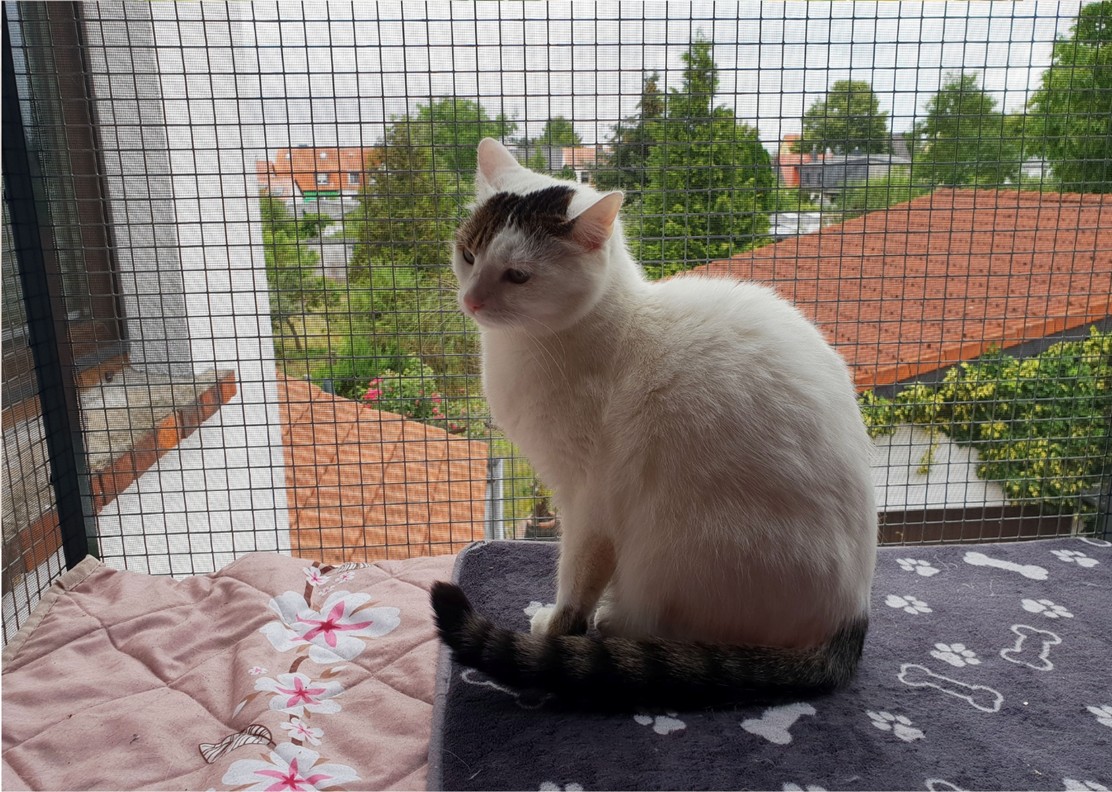Indoor vs Outdoor Cats: the Pros and Cons
The European wildcat, scientific name Felis Silvestris, is the closest wild relative of today’s domestic cats, Felis Silvestris Catus. A European Wildcat may have a home territory of up to 4 square kilometers and is primarily a nocturnal predator, spending the majority of its nighttime waking hours hunting rodents and other small prey. So, what does this mean for our pet cats?

European Wildcat, Felis Silvetris, https://en.wikipedia.org/wiki/European_wildcat
All cats should be encouraged to express their natural behaviours, like their wild relatives. As responsible pet owners, it is our duty to provide as safe an environment as possible for them to do so. Whether this is accomplished indoors or outdoors, there are some additional factors to take into consideration for domestic cats living in a modern urbanised habitat. Below, we discuss some of the main pros and cons of indoor versus outdoor cats.
Indoor Cats
Pro: Safe from dangers such as street dogs, feral cats, and car/moto road traffic accidents. Take into consideration the environment in which you are living, and whether any of these dangers are common in your area.
Pro: Reduced risk of fighting. Indoor cats are unlikely to come into contact with feral cats, avoiding the chance of ending up in a cat fight. However, close proximity with other indoor cats that don’t get along can make fights more likely between housemates, especially if they don’t have any hiding places to escape to.
Pro: Reduced risk of mating. Indoor cats are not able to go out looking for a “boyfriend” or “girlfriend”, so there are no litters of unexpected kittens. But keep in mind that cats can reach sexual maturity as young as 4 months, so if you have cats of the opposite sex living together, you still need to get them fixed – yes even if they are brother and sister, they’re not picky!
Pro: Reduced risk of contracting or spreading contagious diseases. Contagious diseases can be spread from direct contact with other cats (biting, mutual grooming), contact with their urine/faeces/ocular or nasal secretions, contact with an object that an infected cat has come into contact with (fomite transmission) or in some cases as aerosolized droplets. Many of these scenarios are avoided if your cat lives only indoors, but beware that your shoes, clothes, and any other object that is brought home from outside can act as a fomite. It is still important to have your indoor cat vaccinated as recommended by your vet. Cats who are known to be carriers of certain diseases, such as Feline Immunodeficiency Virus (FIV), should be kept indoors for their own benefit and to limit the spread.
Pro: Reduced risk of fleas, ticks, and worms. Internal and external parasites are spread via many routes, but most involve soil, faeces, direct cat-to-cat contact, or eating dead rodents. Keeping your cat indoors will limit their exposure, but it does not completely eliminate the risk. Fleas can be carried in clothing or shoes, and heartworm is spread by mosquitoes. Speak to your vet about an appropriate parasite prevention program for your cat.
Pro: Reduced risk of going missing. If you choose to keep your cat in, make sure all windows and doors are secured. Indoor cats are most likely to try to make an escape during times of stress, such as a house move, or when they are in heat.
Con: Smaller home territory with less variety. Indoor cats inevitably have a much smaller territory, with less daily variety in their environment. This can lead to boredom and behavioural problems.
Con: Less exercise, higher risk for obesity. A smaller area to roam, and no opportunities to hunt, means less exercise. Combined with extended sleeping periods, and overeating due to boredom, this can lead to weight gain. Obesity increases the risk of developing diabetes or urinary issues in indoor cats.
Con: May be more destructive. Natural cat behaviours, like scratching trees and spraying urine, may be undesirable when inflicted on your sofa!

Con: No option to escape. Particularly in multi-cat households, conflict between cats can occur. With no option to go outside to escape an unfriendly housemate, this can be an additional source of stress. Increased competition for limited resources like litter trays, food and water stations, and resting areas, can also be a major source of stress in multi-cat households that may go undetected. Make sure you provide plenty of hiding places all around the house, and the number of litter trays/food & water stations should be the number of cats you have +1 extra.
Con: Urinary issues. When all of the above factors are compounded, obesity, stress, inter-cat conflict, it can greatly increase the risk of a condition called Feline Idiopathic Cystitis (FIC), which in male cats can lead to a blocked bladder – a medical emergency.
Con: Balcony falls. Apartment dwelling cats are always at risk of balcony falls, no matter how careful they seem or how many years they have lived in the apartment, and the consequences can be tragic. Falls are so common in urban areas that the condition has earned its own name: “High Rise Syndrome”. Providing your cat access to your balcony is a great way to provide some environmental enrichment, but it MUST be securely fenced to prevent falls.

Outdoor cats
Pro: Access to larger home territory. It’s not only the size, but the variety in the environment that your cat has access to. The larger the area they are able to safely roam, the more mental stimulation this will provide.
Pro: Increased exercise, lower risk of obesity. Cats that have more space to roam will naturally get more exercise than those who are confined to a house/apartment. Keeping your cat at a healthy body condition score is one of the most beneficial things you can do to support lifelong health.
Pro: Can express natural behaviours. Freedom to express normal behaviours is one of the 5 Freedoms as defined by the British Farm Animal Welfare Council in 1965. These are the core tenets of animal welfare, applicable to all animals that are under human control. All cats need to have the opportunity to mimic their wild cousins’ hunting instincts and territorial marking behaviours, including scratching and rubbing. When these behaviours are performed inside, human owners may consider them a “nuisance” and seek to deter or even punish the cat. Instead, look for suitable scratching alternatives and use blankets or specifically designed plastic chair covers to protect your furniture.
Pro: The option to escape. Certain everyday situations may be extremely frightening to some cats; unfamiliar people in the home, construction noise, and inter-cat conflict. The option to temporarily stay away from a stressful home environment when necessary can be beneficial in some scenarios.
Con: Risk of Road Traffic Accidents, stray dogs, unfriendly humans. Busy roads and free-roaming dogs are commonplace in urban areas in Cambodia, and both pose a serious risk to outdoor cats. Instances of capture/animal abuse by humans are also unfortunately not unheard of.
Con: Fighting. Cats are territorial, particularly the males. In the wild, they mark their territory by spraying urine and leaving faeces, as well as leaving visible scratch marks on trees. Outdoor cats in urban areas like Phnom Penh will often encroach upon each others’ home territory – leading to cat fights! Because of the long and pointed shape of the canine teeth, a cat bite can puncture deep into the soft tissues, effectively injecting the attacking cats’ oral bacteria deep into the muscle, and this can develop into a nasty infected abscess days or even weeks after the initial fight. There can be long term consequences too – cat bites are the main route of transmission for Feline Immunodeficiency Virus (FIV), a lifelong viral disease that permanently impacts your cat’s immune system, equivalent to the HIV/AIDS virus of humans.
Con: Mating. Letting your cat go outside before they have been neutered will only contribute to overpopulation, and puts them at risk of sexually transmitted diseases, as well as anything that can be spread by close contact with other cats (parasites, viruses, fungal diseases). They are also more likely to fight if they are kept intact as opposed to being neutered.
Con: Contagious disease. Outdoor cats are at a much higher risk of contracting a contagious disease, either directly from an infected cat, or via fomite transmission or even through the air. Let your vet know that your cat has outdoor access, so they can help you to come up with a suitable vaccination plan, which is likely to include more vaccinations or more frequent boosters than for an indoor cat. Keep in mind that vaccines aren’t available for every disease, so give some serious consideration to this risk. Do you have the time and resources available to treat your cat if they contract a serious illness?
Con: Parasites. Outdoor cats are at a greatly increased risk of exposure to both internal parasites (intestinal worms, heartworms) and external parasites (fleas, ear mites). If you let your cat outside, it is important to treat them at the recommended interval, usually monthly, to prevent infestation with these unwelcome visitors!
Con: Going Missing. Outdoor cats can get lost, or worse, snatched by pet thieves. You can mitigate the risk by having your cat wear a collar with an ID tag that includes your phone number/address, but this relies on the collar remaining on your cat and them being found and returned to you. You may have your cat microchipped; this is a tiny permanent radio-frequency tag, about the size of a grain of rice, that is implanted under your cat’s skin. The only data contained within a microchip is a unique 15-digit number. In order for that microchip to be linked to you, it must be registered on a database and the person who finds your cat must have a vet scan the microchip and then search that database. A microchip cannot be removed once implanted, unlike a collar. Consider investing in a wearable GPS tracking device, as it has the advantage of providing a real-time location. We recommend combining all 3 methods, for the best chance at being reunited with your cat, should they ever have the misfortune to go missing.
Con: Risk of poisoning. Owners of indoor cats have (almost) total control over what their cats consume. However, outdoor cats have unlimited access to a range of potential poisons and hazards – common ones include lily flowers, rodent poison, glue traps, household chemicals, antifreeze, and although not poisonous, bones can puncture or obstruct the gastrointestinal tract.
In summary, there’s no right answer. If you choose to keep your cat solely indoors, make sure to provide enough enrichment, resources, and attention to keep them stimulated. Enrichment can include food puzzles, high viewing perches, low hiding places – these don’t have to be expensive or even complicated. Cardboard boxes are the preferred choice for most cats! Or, hide a few dry cat kibbles in an empty toilet roll tube, or just drop a handful of dry cat food on the hard tiled floor and watch your cat chase the pieces as they scatter! When it comes to resources, such as food/water stations, litter trays, and beds, the golden rule is to provide one for each cat plus an extra one. Make sure to also spend time actively interacting with your cat daily by playing with toys, stroking, and/or brushing them every day. If you are away from home for long hours during the day, consider getting 2 cats together so they can keep each other company. Getting a bonded pair of cats at the same time is easier than trying to introduce a new cat later on.
If you choose to let your cat explore the outdoors, it is imperative that you adhere strictly to your vet’s recommendations for their vaccine/deflea/deworm schedule and NEUTER them, as well as making sure they have a collar with ID tag, microchip, and ideally a GPS tracker.
